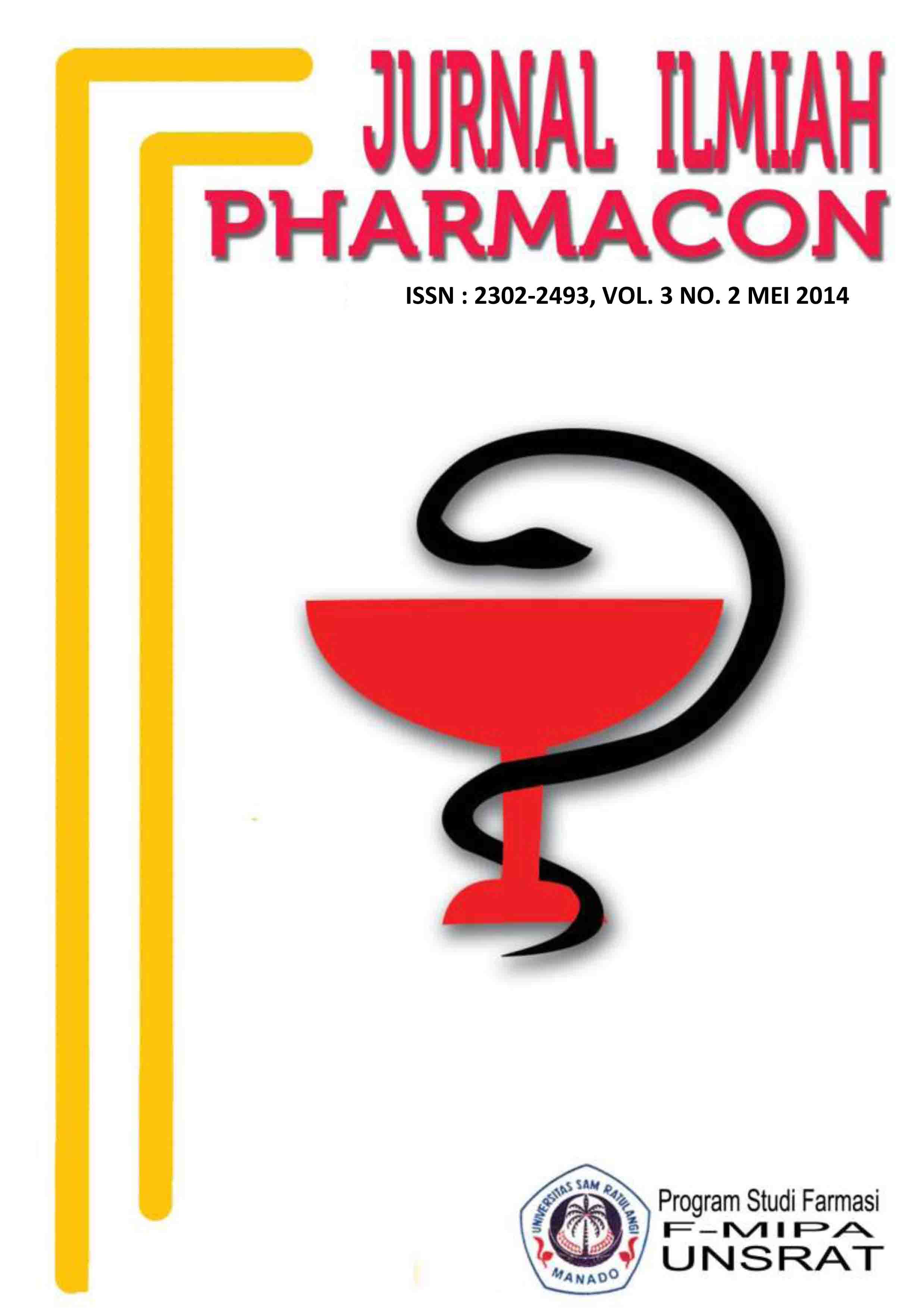UJI EFEK ANALGETIK EKSTRAK ETANOL DAUN PEPAYA (Carica papaya L) PADA MENCIT PUTIH JANTAN (Mus mucculus)
DOI:
https://doi.org/10.35799/pha.3.2014.4777Abstract
The objectives of this research were to find out analgesic effect of pepaya leaf etanol extract with concentration 0,6 g/kgBB, 1,2 g/kgBB and 2,4 g/kgBB on white male mouse (Mus musculus). The subject in this research were 15 white male mouse which divided into 5 groups, each group consist of 3 white male mouse. Negative control group were administered with CMC, positive control group were administered with mefenamid acid and experiment groups were administered with pepaya leaf etanol extract. Analgesic test were examined by giving pain stimulation to treated animals, such a 55°C heat stimulation. The response which observed were mouse licking feet or jumping response. The observation, then at 30, 60, 90 and 120 minutes after administered. The results shows that pepaya leaf etanol extract with concentration 0,6 g/kgBB, 1,2 g/kgBB and 2,4 g/kgBB prossess analgesic effect on white male mouse, expecially concentration 2,4 g/kgBB. It can be conclusion that pepaya leaf etanol extract own the analgesic effect on white male mouse thermal induction.
Â
Key words : analgesic, pepaya leaf extract, pain
Â
Â
Downloads
How to Cite
Issue
Section
License
Authors who publish with this journal agree to the following terms:
- Authors retain copyright and grant the journal right of first publication with the work simultaneously licensed under a Creative Commons Attribution-NonCommercial 4.0 International License that allows others to share the work with an acknowledgement of the work's authorship and initial publication in this journal.
- Authors are permitted and encouraged to post their work online (e.g., in institutional repositories or on their website) prior to and during the submission process, as it can lead to productive exchanges, as well as earlier and greater citation of published work (See The Effect of Open Access)










